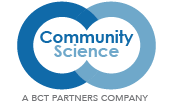There are some common traps foundations and nonprofit organizations fall into in doing strategic planning. These traps can derail the best of intentions for achieving community impact. They especially hinder advancing equity and justice for communities that are historically disadvantaged and excluded. Here is a quick guide you can use to help identify them. Over the next several weeks, we’ll be posting about how to address them.
Successful strategies can, and should, define the priorities that offer the best odds of positive outcomes and provide clarity on how to allocate attention and resources. The following strategy traps often remain under the radar and work together. Check for how they show up and may be getting in the way. Refer to this new white paper for more detail on equity and justice, what good strategy to advance it looks like, and how to get there.
-
- The Consultancy Trap. It is helpful to consider that these traps do not show up by accident. Many stem from strategy consulting approaches that were developed to maximize corporate growth in the private sector and were repurposed for the philanthropic and nonprofit space. Others are influenced by 360-degree pressures to demonstrate quantifiable value and impact, no matter how small or short term.
- The Strategic Plan. Ironic, right? It is all too easy to conduct a strategic planning process and write a strategic plan document without producing a good strategy. Especially if that planning process occurs annually or less frequently, and the plan document remains static.
- The “Strategy” Label. Adding the word “strategy” to a basic activity, lofty goal, or bullet point list does not make a strategy. The following are real-life examples of what I see cited as strategies in organization’s strategic plans, theories of change, and websites: “Use data.” “Address inequities.” “Build partnerships.” “Change systems.”
- Starbucks(R) Strategy. No offense to the company or its customers, this is a classic private sector strategy approach that emphasizes the scaling of a narrowly defined solution. This solution is often seen as a silver bullet, and does not account for the full reality of equity and justice issues or communities’ lived experience. The solution could be a program model, supportive resources like capacity building, technology, or coordination, approach like scaling what works, or something as broad as more innovation or evidence. These all have their place, but getting too wrapped up in any of them can lead to losing sight of why it is being promoted in the first place. Coffee connoisseur arguments aside, if only achieving equity and justice were convenient as installing a fine caffeinated beverage store on every block.
- Segmentation. Another private sector influence has been the naming of narrowly defined, artificially segmented focus areas and conflating this with good strategy. Emphasizing an organization’s strengths and impact areas is indeed an important strategic consideration, but can be disconnected from the big picture of equity and justice. This shows up as naming exclusive social issues (e.g., health, education), populations (e.g., children, youth), or other focus areas for support, without recognizing how these are seamlessly integrated in the reality of community experience. We even have a growing list of equity and justice categories: racial equity, health equity, education equity, economic equity, environmental justice, gender justice, restorative justice, data justice… Going deep is necessary, but can also dilute collective efforts and hinder opportunities for shared progress.
- Quantify & Predict. “We will achieve XX in exactly 2.5 years with 115% attribution.” Maybe. But even if so, whose purposes does this serve and will this move the needle on equity and justice?
- The Equity & Justice Label. This has been a big one over the past year for well-known reasons. While there has been significant momentum to strengthen race, diversity, equity, inclusion, and belonging within internal and external practices, this focus remains notably missing when it comes to strategic planning. The nature of equity and justice means that it underlies nearly every social issue, population, or solution that may be named as a focus area (see traps #3 and 4). Thus, advancing it will be impossible without putting it front and center in defining strategic priorities. Regarding it as add-on, checklist item, or consideration for tweaking standing activities effectively marginalizes equity and justice within an organization. This will leave historically disadvantaged and excluded communities similarly marginalized.
We’re here to help. If your strategic plan has one or more of these challenges, reach out to us. We will be happy to talk with you about solutions and provide a free consult. Reach us here, and let’s do some good work together.
The next post in the series where I begin to address the five strategies and principles used to address the above gaps can be found here.
Follow me on LinkedIn or join our newsletter below in the footer to stay informed about this topic.

